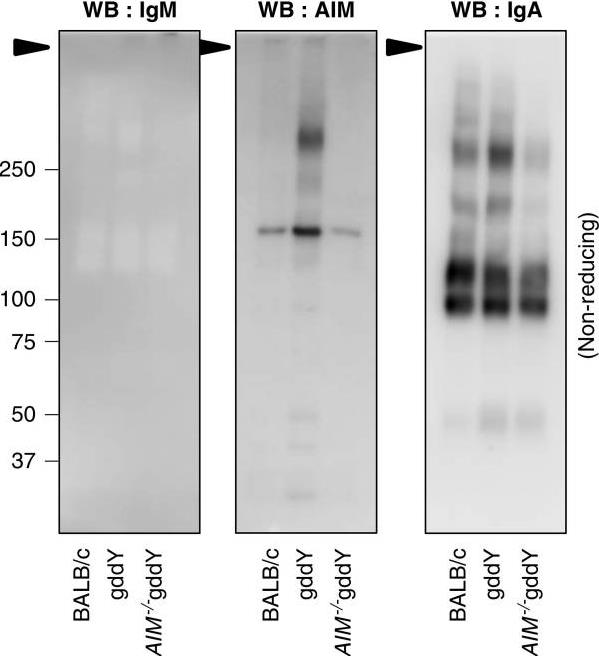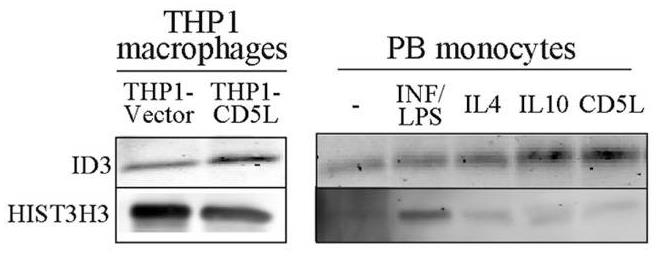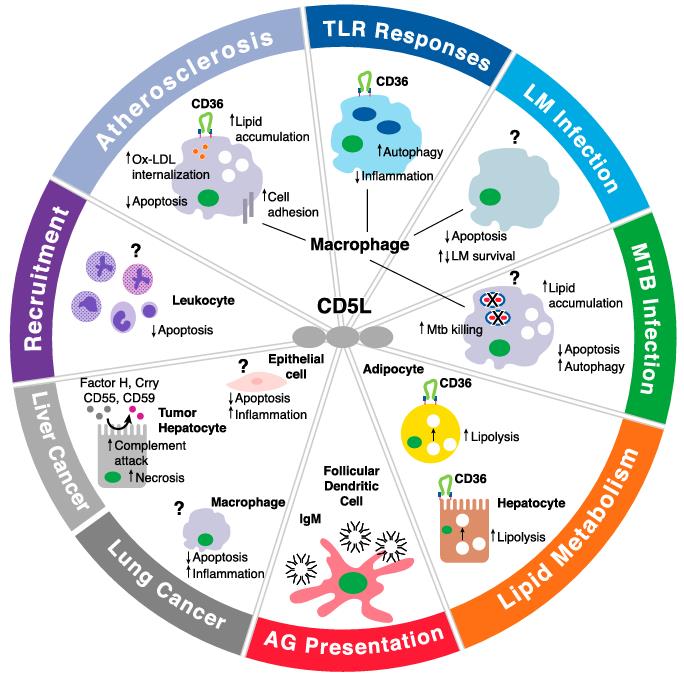Recombinant Full Length Human CD5L protein(Met1-Gly347), His-tagged
| Cat.No. : | CD5L-3185H |
| Product Overview : | Recombinant Human CD5L (NP_005885.1) (Met 1-Gly 347) with a C-terminal polyhistidine tag was expressed in HEK293. |
| Availability | April 18, 2025 |
| Unit | |
| Price | |
| Qty |
- Specification
- Gene Information
- Related Products
- Case Study
- Application
- Download
| Species : | Human |
| Source : | HEK293 |
| Tag : | His |
| Protein Length : | 1-347 a.a. |
| Form : | Lyophilized from sterile PBS, pH 7.4. Normally 5 % - 8 % trehalose, mannitol and 0.01% Tween80 are added as protectants before lyophilization. |
| Molecular Mass : | The secreted recombinant human CD5L comprises 339 amino acids and has a predicted molecular mass of 37.5 kDa. As a result of glycosylation, rhCD5L migrates as an approximately 45 kDa band in SDS-PAGE under reducing conditions. |
| Endotoxin : | < 1.0 EU per μg of the protein as determined by the LAL method |
| Purity : | > 97 % as determined by SDS-PAGE |
| Storage : | Samples are stable for up to twelve months from date of receipt at -20°C to -80°C. Store it under sterile conditions at -20°C to -80°C. It is recommended that the protein be aliquoted for optimal storage. Avoid repeated freeze-thaw cycles. |
| Reconstitution : | It is recommended that sterile water be added to the vial to prepare a stock solution of 0.2 ug/ul. Centrifuge the vial at 4°C before opening to recover the entire contents. |
| Gene Name | CD5L CD5 molecule-like [ Homo sapiens ] |
| Official Symbol | CD5L |
| Synonyms | CD5L; CD5 molecule-like; API6, apoptosis inhibitor 6 , CD5 antigen like (scavenger receptor cysteine rich family); CD5 antigen-like; Spalpha; CT-2; apoptosis inhibitor 6; igM-associated peptide; CD5 antigen-like (scavenger receptor cysteine rich family); AIM; API6; PRO229; SP-ALPHA; |
| Gene ID | 922 |
| mRNA Refseq | NM_005894 |
| Protein Refseq | NP_005885 |
| MIM | 602592 |
| UniProt ID | O43866 |
| ◆ Recombinant Proteins | ||
| CD5L-831H | Recombinant Human CD5L Protein, His-tagged | +Inquiry |
| Cd5l-1828M | Recombinant Mouse Cd5l protein, His & GST-tagged | +Inquiry |
| CD5L-3115H | Recombinant Human CD5L Protein, MYC/DDK-tagged | +Inquiry |
| CD5L-10965H | Recombinant Full Length Human CD5L, His-tagged | +Inquiry |
| CD5L-151H | Recombinant Human CD5L Protein, DYKDDDDK-tagged | +Inquiry |
| ◆ Cell & Tissue Lysates | ||
| CD5L-2302HCL | Recombinant Human CD5L cell lysate | +Inquiry |
| CD5L-3042MCL | Recombinant Mouse CD5L cell lysate | +Inquiry |
Case 1: Takahata A, et al. J Am Soc Nephrol. 2020
In IgA nephropathy (IgAN), abnormal deposits of IgA in the kidneys lead to inflammation and damage. The AIM protein has been found to worsen this condition by affecting macrophages. Research using mice models showed that those lacking AIM were protected from kidney damage even with IgA deposits. AIM was linked to further immune deposits and inflammation, but in its absence, these issues didn't occur. Adding AIM back brought back the typical IgAN symptoms. This highlights AIM's role in intensifying IgAN progression.

Fig1. Peak levels of hematuria before rAIM and PBS administration and within 4 hours after administration.

Fig2. No immune complex formation of IgA and IgM via AIM was detected in serum samples from gddY mice.
Case 2: Sanjurjo L, et al. Front Immunol. 2018
CD5L is a protein that plays a role in controlling inflammation, especially in conditions like infections, atherosclerosis, and cancer. This study explored how CD5L affects human macrophages and their ability to change, or polarize, into specific types. The results showed CD5L prompts a shift similar to that caused by IL10, boosting processes linked to autophagy—a cell recycling process. Blocking parts of this process in cells stopped CD5L's effects on certain genes involved in inflammation and cell cleanup. The work highlighted how CD5L uses autophagy to influence the gene ID3, which is crucial for this polarization effect in macrophages.

Fig1. Fluorescence microscopy images of unstimulated deep red-stained THP1-vector and THP1-CD5L macrophages (purple) co-cultured with apoptotic CFSE-HepG2 cells (green).

Fig2. Western blot of ID3 in THP1-vector and THP1-CD5L cells and in 72 h-polarized PB monocytes.

Fig1. The many roles of CD5L in inflammation. (Lucía Sanjurjo, 2015)
Not For Human Consumption!
Inquiry
- Reviews
- Q&As
Ask a Question for All CD5L Products
Required fields are marked with *
My Review for All CD5L Products
Required fields are marked with *
Inquiry Basket


